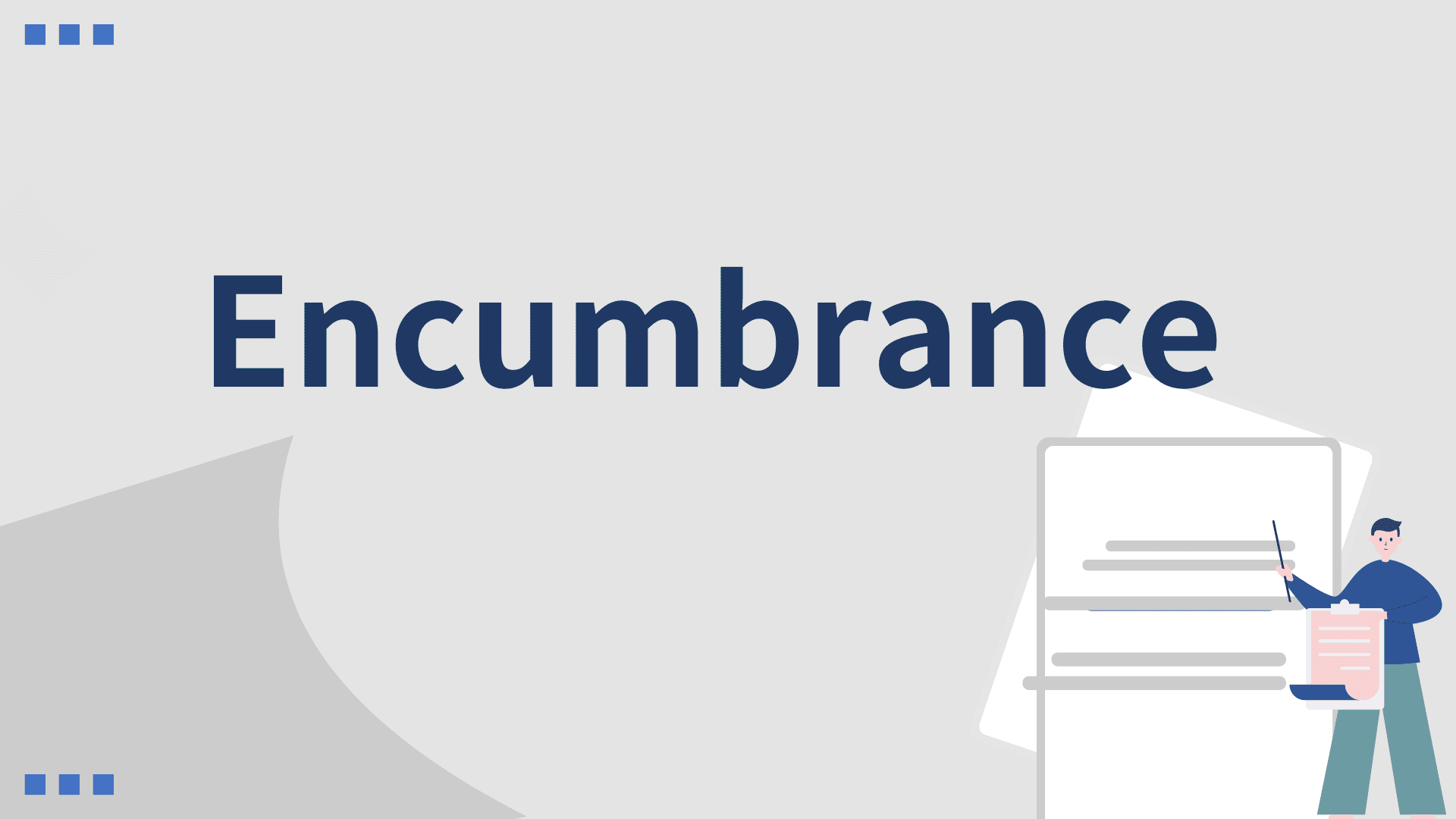Definition: Encumbrance is a legal claim affecting a property’s sale. It can be a structural encroachment or any claim attached to a property that directly affects its value or obstructs its usage.
The most common examples seen in immovable properties are mortgages, easements, and property tax liens. Some encumbrances can affect a security’s marketability, but this does not mean that the title cannot be sold or bought.
Sometimes, even after signing contracts, encumbrances can cause the purchaser to withdraw and claim damages.
What is an Encumbrance?
Encumbrance means any mortgage, charge, pledge, hypothecation, security interest, lien or claim of lien (statutory or otherwise), easement, deemed or statutory trust, restrictive covenant, adverse claim, exception, reservation, right of occupation, any matter capable of registration against the title, right of preemption, privilege, that, in substance, secures payment or performance of an obligation.
In other words, an encumbrance is a charge by a third party against a property. The concept sometimes encompasses a wide variety of things other than the titleholder’s financial and non-financial claims to a property.
In some cases, a third party can burden property owners with complete control over their land, that is, unencumbered. For example, a creditor can get possession of the property, or government authorities may even seize it.
An encumbrance affects the ability of the property owner to use the property in any manner he chooses.
Types of Encumbrances
The following are the common types of encumbrance. Each encumbrance should protect all parties and explain inclusion and exclusion.
Easement: An easement is the party’s right to use or improve portions of another party’s property and/or to prevent the property owner from using or improving the property. Mostly, it serves the general social good, such as public access.
Encroachment: When a party intrudes on the property. It is illegal and can cause a lawsuit if not resolved through negotiation. It is called encroachment.
Lease: An agreement to rent a property for a particular duration and agreed-upon amount. It is an encumbrance because the owner does not lose property ownership, but the lease agreement constrains their right to use the property.
Lien: It is a security interest that affects the property’s title. Creditors have the right to seize the property as collateral for an unmet obligation (e.g., an unpaid debt). Often, a willed property can have this encumbrance that affects the title.
Mortgage: This is a lien against a real estate property, where the lender retains an interest in the house until the mortgage is paid off.
Restrictive Covenant: An agreement that a seller adds to a buyer’s deed of the property to restrict how the buyer may use the property. For example, the provision may require the buyer to leave a building’s original façade intact.
Example of Encumbrance
A business did not pay taxes, so the tax department sealed its building. Now another party can only purchase the building from the previous owner if the taxes are paid. This is an example of encumbrance that affect the sale of a property.
Handling Encumbrances
Encumbrances can be in two groups: private and governmental. Depending on whether they are financially motivated or constructed around zoning regulations, these encumbrances have different characteristics.
The following can help us understand the burden of encumbrance:
- Do a property title search.
- Hire a real estate lawyer.
- Obtain a legitimate survey report.
Encumbrances are often an obstruction that stops individuals from making fast business decisions and assists people in making the best real estate decisions. They become problematic for purchasers who fail to perform due diligence and sellers who prefer to hide encumbrances.
While some obstacles, such as zoning regulations or environmental protection, are difficult to overcome. Here, the buyer’s willingness to invest the time and money necessary to reverse them is the key.
However, you can resolve most encumbrances by simply repaying a loan or renegotiating a lease agreement.
Conclusion
Any burden, interest, right, or claim adversely affecting the ability to use or transfer property is an encumbrance. Due diligence checks, such as performing title searches and surveys, can protect buyers from most encumbrances.
Having a real estate attorney is critical to guide the intending property buyer through the process and advise them when uncommon encumbrance surfaces.
